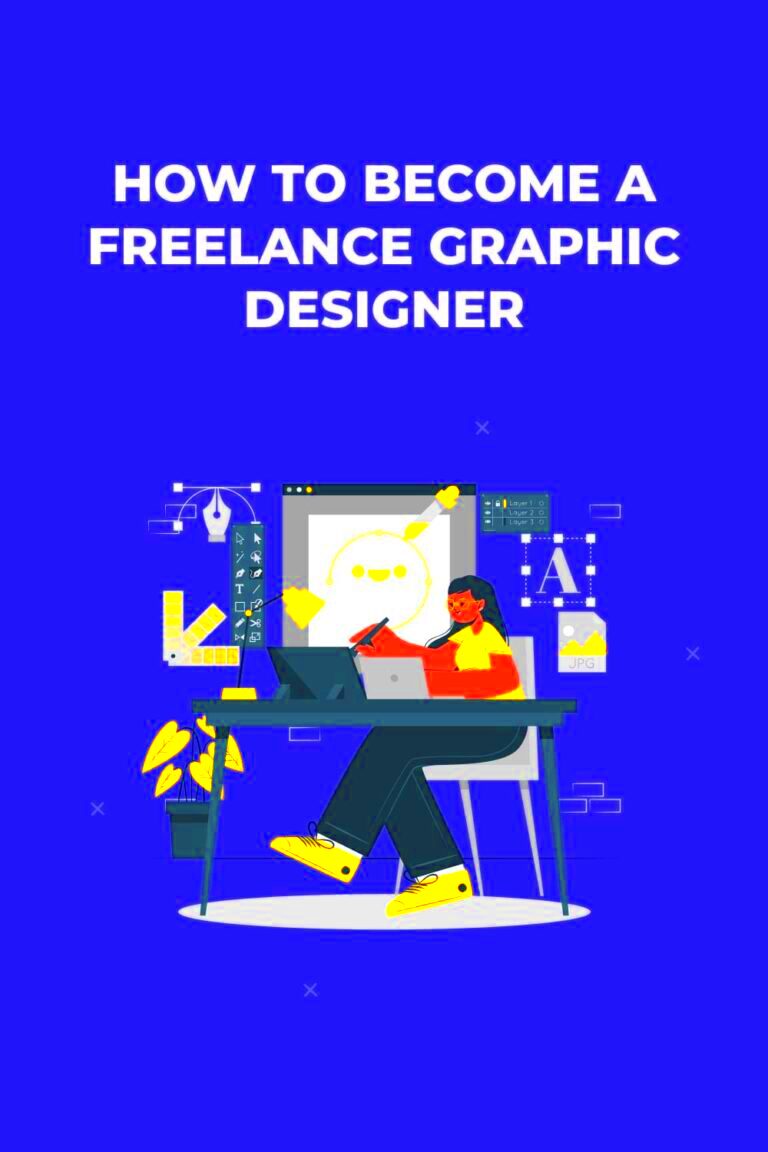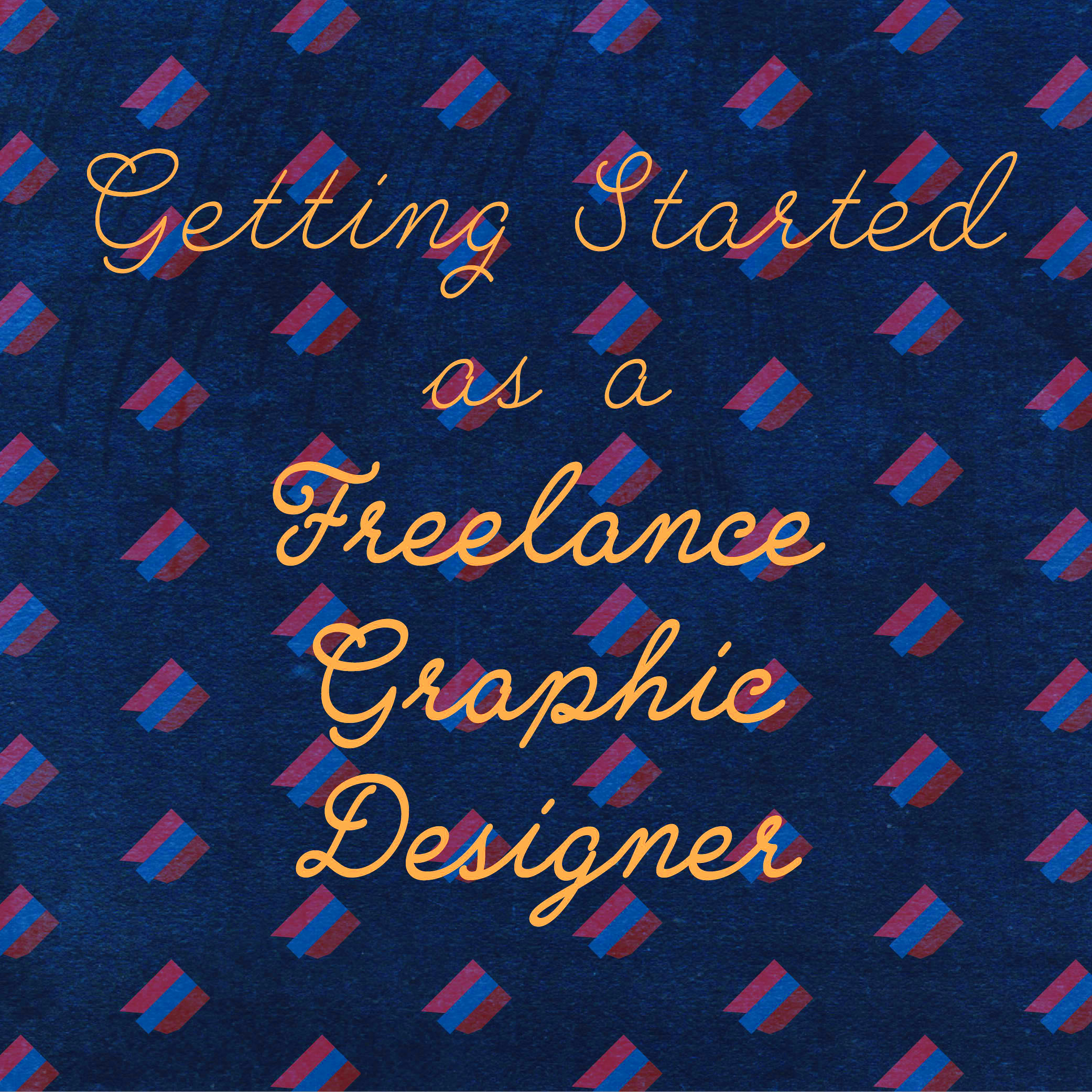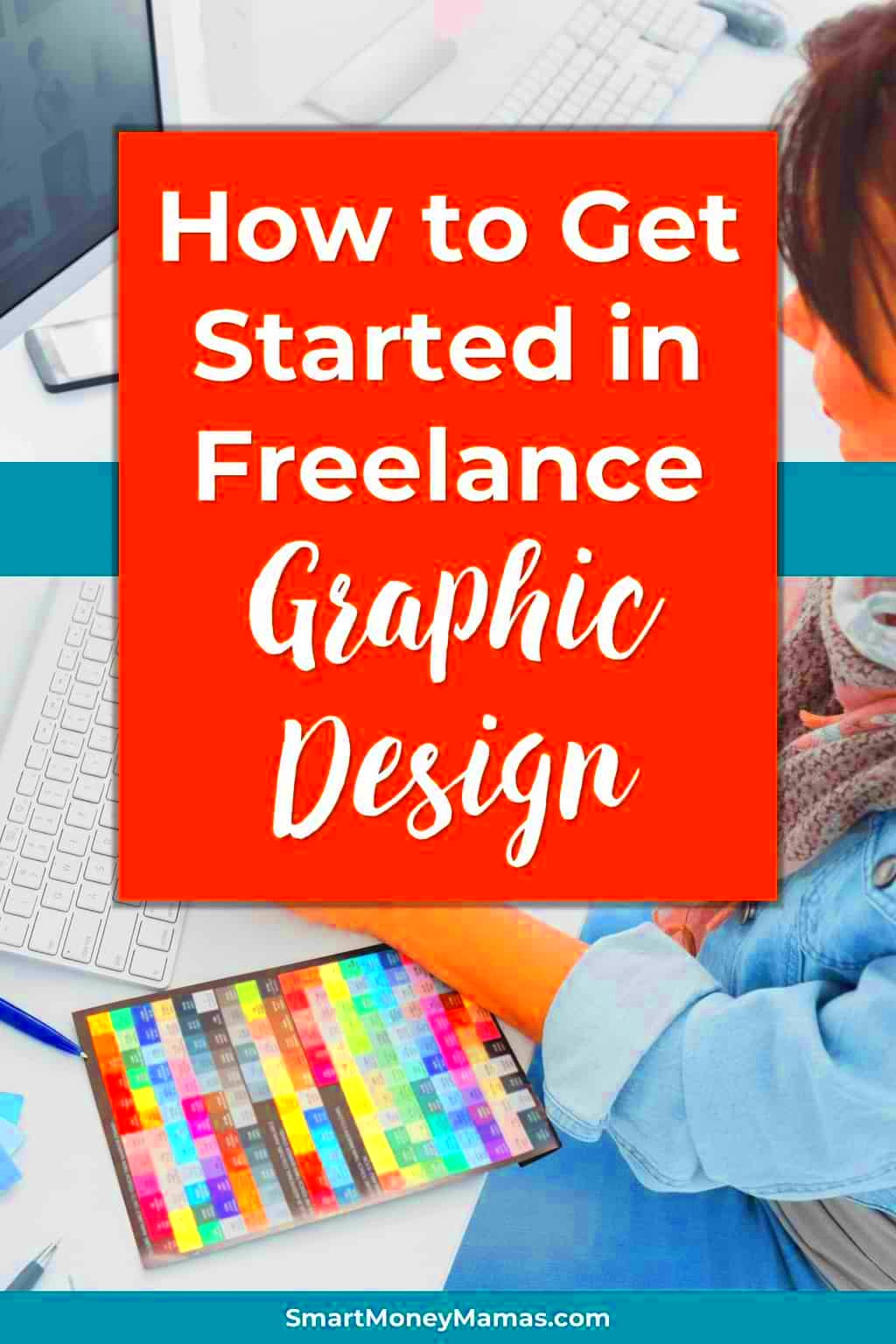Embarking on a journey as a freelance designer can be a mix of emotions. As a graphic designer you'll be tasked with crafting visuals that convey concepts and messages to different audiences. Unlike conventional employment freelancing grants you the flexibility to select your projects and set your own schedule. However this autonomy also brings the responsibility of managing all aspects independently, such as client acquisition and administrative duties.
Freelance design goes beyond aesthetics; it involves finding solutions and crafting visuals that leave a lasting impression. Whether it’s a logo, a website or promotional materials your designs must align with the clients requirements and preferences. It’s a fusion of artistry and professionalism, where grasping the clients concept and transforming it into impactful design plays a crucial role.
Throughout my personal experience I’ve discovered that the true pleasure of freelancing comes from collaborating with a range of clients and projects. Every project presents a challenge and each client offers a distinct viewpoint. It’s this diversity that adds an element of freshness and excitement to the work I do.
Key Skills Needed for Success

To succeed as a freelance graphic designer, it’s crucial to hone a range of skills. Here are the key ones you should focus on.
- Creativity: This is the cornerstone of graphic design. You need to come up with original ideas that capture attention and convey messages effectively.
- Technical Proficiency: Familiarity with design software like Adobe Creative Suite (Photoshop, Illustrator, InDesign) is crucial. You should also be comfortable with other tools that help in creating and editing graphics.
- Communication: Being able to clearly articulate your ideas and understand the client's needs is essential. Good communication helps in avoiding misunderstandings and ensures that the final design aligns with the client’s vision.
- Time Management: Freelancers often juggle multiple projects simultaneously. Effective time management helps in meeting deadlines and delivering quality work without last-minute stress.
- Problem-Solving: Design projects can come with unexpected challenges. Being able to think on your feet and find creative solutions is an important skill.
In my journey I've found that striking a balance between these skills can be quite a challenge. However it's crucial for establishing a thriving freelance path. I recall when I first began I had to pick up these abilities as I went along. It was tough but through dedication and consistent effort they eventually became ingrained in me.
Also Read This: How to Create a Fiverr Account: A Step-by-Step Guide
Creating an Impressive Portfolio

As a graphic designer your portfolio serves as your introduction. It highlights your abilities, unique flair and the diversity of your projects to attract potential clients. Here are some tips to help you build a portfolio that leaves a lasting impression.
- Showcase a Variety of Work: Include different types of projects, such as logos, brochures, and websites. This demonstrates your versatility and ability to handle various design challenges.
- Highlight Your Best Work: Quality is more important than quantity. Select projects that best represent your skills and creativity. Avoid cluttering your portfolio with too many pieces.
- Include Case Studies: For a deeper insight into your process, add case studies that explain the problem, your solution, and the results. This provides potential clients with a clearer understanding of your approach and problem-solving abilities.
- Keep It Updated: Regularly update your portfolio with recent work. This not only shows that you’re active in your field but also keeps your portfolio relevant to current design trends.
- Make It User-Friendly: Ensure that your portfolio is easy to navigate and visually appealing. A clean, well-organized layout makes a positive impression.
In the beginning when I was putting together my portfolio I made the error of including every single project I had undertaken. It wasn't until I shifted my attention to highlighting my work and displaying it in a neat and structured way that I began receiving more favorable feedback from clients.
Also Read This: Where Do I Find My Offer on Fiverr?
Finding Your First Clients
Getting your initial clients as a freelance designer might seem challenging but it's a thrilling achievement in your career. In the beginning it's essential to create a solid network and make your mark. Here are some steps to kick things off:
- Leverage Your Network: Reach out to friends, family, and acquaintances who might need design services or can refer you to others. Sometimes, your first clients might come from the people you know.
- Build an Online Presence: Create a professional website and showcase your portfolio. Social media platforms like LinkedIn, Instagram, and even Facebook can be powerful tools for networking and finding clients. Regularly post updates about your work and engage with your audience.
- Join Freelance Platforms: Websites like Fiverr, Upwork, and Freelancer can be great places to find your initial projects. These platforms allow you to bid on projects and connect with potential clients looking for freelance designers.
- Attend Networking Events: Participate in industry events, webinars, and local meetups. Meeting potential clients face-to-face can lead to opportunities that online interactions might not offer.
- Offer Pro Bono Work: Consider taking on a few pro bono projects for non-profits or startups. It’s a great way to build your portfolio and gain testimonials that can help attract paying clients.
I recall my initial client being a small community enterprise I collaborated with while in college. I contacted them and proposed my assistance at a reduced fee and that project opened doors to additional recommendations. Its usually these foundational relationships that contribute to establishing your credibility and expanding your clientele.
Also Read This: Can You Give a Review on Fiverr Without Paying?
Setting Your Rates
Figuring out the right pricing can be quite challenging when it comes to freelancing. Its crucial to strike a balance between keeping your business afloat and drawing in clients with your rates. Here are a few suggestions to assist you in determining your pricing.
- Understand Your Worth: Consider the time and effort required for each project, your level of expertise, and the industry standards. Your rates should reflect the quality and value you bring to the table.
- Research Industry Standards: Look at what other freelance graphic designers are charging. While you don’t have to match their rates exactly, it helps to know the range and set your prices competitively.
- Offer Different Pricing Models: You can choose between hourly rates, project-based fees, or retainer agreements. Each model has its benefits depending on the type of work and the client’s needs.
- Be Transparent: Clearly outline what’s included in your pricing. Clients appreciate knowing what they’re paying for and it helps avoid misunderstandings down the line.
- Adjust as Needed: As you gain more experience and expand your portfolio, don’t be afraid to adjust your rates. Regularly review and update your pricing to reflect your growing skills and market demand.
In the beginning I didn’t recognize the worth of my services and it resulted in challenges. As time went on I discovered how to establish prices that aligned with my expertise and the value I brought to the table. It’s an ongoing journey but striking the balance is essential for achieving lasting success.
Also Read This: What to Include in Your Fiverr Requirements: A Comprehensive Guide
Managing Your Freelance Business
Running a freelance venture entails not only focusing on your design projects but also taking care of different administrative responsibilities to ensure everything operates seamlessly. Here’s a guide on how to efficiently manage your freelance business.
- Stay Organized: Use tools like project management software to keep track of deadlines, client communications, and project details. Staying organized helps you manage multiple projects without getting overwhelmed.
- Handle Finances Wisely: Keep track of your income and expenses. Use accounting software or hire an accountant to ensure your finances are in order and to manage taxes effectively.
- Set Clear Contracts: Draft clear contracts for each project that outline the scope of work, deadlines, payment terms, and other relevant details. This helps prevent misunderstandings and protects both you and your clients.
- Communicate Effectively: Maintain regular communication with your clients. Provide updates, seek feedback, and address any concerns promptly. Good communication builds trust and helps ensure client satisfaction.
- Invest in Professional Development: Continuously improve your skills and stay updated with industry trends. Attend workshops, take online courses, and read industry publications to keep your skills sharp and relevant.
Running my freelance venture came with its challenges. At first I had a hard time balancing my schedule and keeping track of finances. However as I set up routines and invested in tools to simplify these tasks I discovered a groove that suited me. Its really about discovering, what aligns with your workflow and staying committed to it.
Also Read This: Starting as a Freelance Bookkeeper
Staying Updated with Design Trends
In the fast changing realm of graphic design keeping abreast of the latest trends is essential. It not only breathes life into your work but also aligns with client expectations and helps you maintain your relevance in the field. Here are some tips to stay ahead of design trends.
- Follow Design Blogs and Websites: Regularly read design blogs, websites, and magazines. Websites like Behance, Dribbble, and AIGA provide valuable insights into current design trends and innovative techniques.
- Join Design Communities: Engage with online communities and forums where designers share their work and discuss trends. Platforms like Reddit’s design subreddits and design-related Facebook groups can be great resources.
- Attend Design Conferences and Workshops: Participating in design conferences and workshops not only helps you learn about the latest trends but also allows you to network with other professionals in the field.
- Subscribe to Newsletters: Many design platforms and influencers offer newsletters that deliver trend updates directly to your inbox. This is an easy way to keep up with industry changes without having to search for them.
- Experiment with New Tools and Techniques: Sometimes, the best way to understand new trends is to experiment with them yourself. Try out new design tools or techniques and incorporate them into your projects.
In the beginning I had a hard time keeping pace with the latest trends. It felt daunting at first but once I started following some key sources and made learning a part of my routine it became easier to handle. Keeping myself informed not enhanced my designs but also boosted my confidence in what I do.
Also Read This: Leads Domain Search: Unpacking How SpyFu Leads Domain Search with Keywords
Balancing Multiple Projects
As a freelance designer juggling several projects is all in a days work. It calls for skills in managing your time and staying organized to give each project the focus it needs. Here are some tips on how to handle multiple projects smoothly.
- Prioritize Tasks: Identify which projects are most urgent and prioritize them accordingly. Use tools like to-do lists or project management apps to keep track of deadlines and tasks.
- Set Realistic Deadlines: Be honest about how long tasks will take. Setting realistic deadlines helps you manage client expectations and avoids the stress of last-minute rushes.
- Break Down Projects: Divide larger projects into smaller, manageable tasks. This makes it easier to track progress and tackle each part without feeling overwhelmed.
- Use Time Management Techniques: Techniques like the Pomodoro Technique, where you work in focused intervals followed by breaks, can help you stay productive and avoid burnout.
- Maintain Clear Communication: Keep your clients informed about the progress of their projects. If you’re juggling multiple projects, regular updates can help manage client expectations and reduce anxiety.
In my experience keeping track of various projects is crucial to finding a balance. Its important to be realistic about what you can take on. When I was starting out in my career I bit off more than I could chew which resulted in stress and some missed deadlines. With time I discovered how to establish boundaries and handle my workload, more efficiently.
Also Read This: How to Delete Your Fiverr Account on Mobile
FAQ
Q: How can I find clients if I’m just starting out in freelance graphic design?
Begin by tapping into your connections and reaching out to loved ones. Furthermore establish a solid online presence by creating a website and utilizing social media platforms. Explore freelance websites and participate in networking events to meet potential clients.
Q: How do I decide on the right pricing for my services?
A: Look into what other freelancers typically charge in your field to get a sense of industry standards. Take into account your level of experience, the difficulty of the project and the time it will take. Begin with rates and gradually modify them as you gain more experience and strengthen your portfolio.
Q: What are some effective ways to stay updated with design trends?
Stay updated on design by keeping an eye on blogs participating in online forums and signing up for newsletters. Attend design events and workshops to gain insights into the newest trends and methods. Additionally dont hesitate to try out tools and approaches on your own to stay ahead of the curve.
Q: How can I manage multiple projects without feeling overwhelmed?
A: Focus on what needs to be done first and establish achievable timelines. Divide big projects into manageable steps and employ time management strategies such as the Pomodoro Technique. Keep your clients informed through communication and utilize project management software to keep things in order.
Conclusion
Embarking on a freelance design career can be an enriching experience brimming with chances for creativity and personal development. From securing your clients to juggling various projects and keeping up with design trends every stage presents its own set of obstacles and victories. Looking back on my own journey I recall the initial challenges and the excitement of acquiring that first client. With determination and a thirst for knowledge the process gradually became smoother and more enjoyable. Embrace the difficulties stay organized and continue expanding your skills. While the path may be tough it is also immensely rewarding. Your distinct style and perspective will shine through making your freelance journey both successful and fulfilling.




